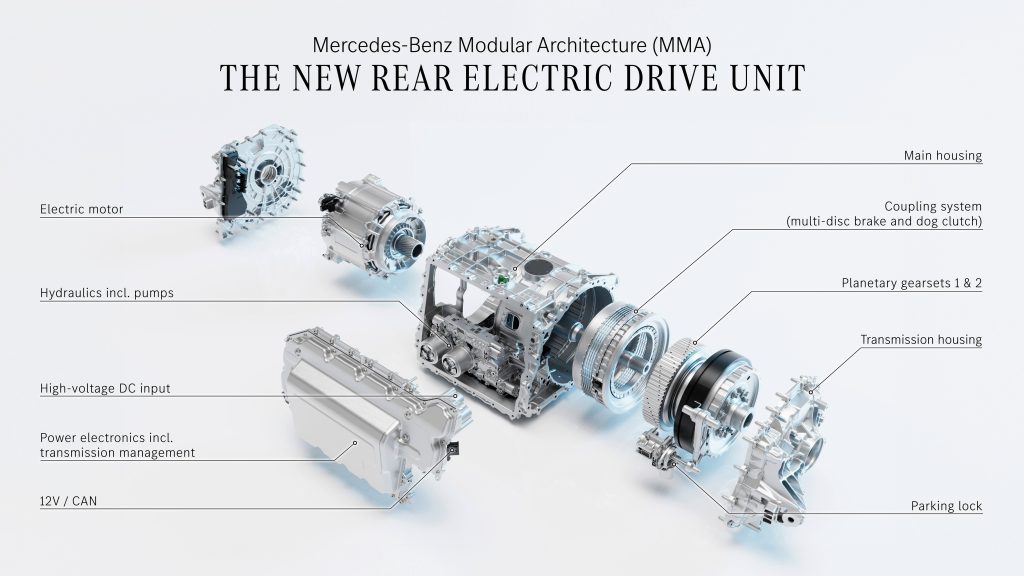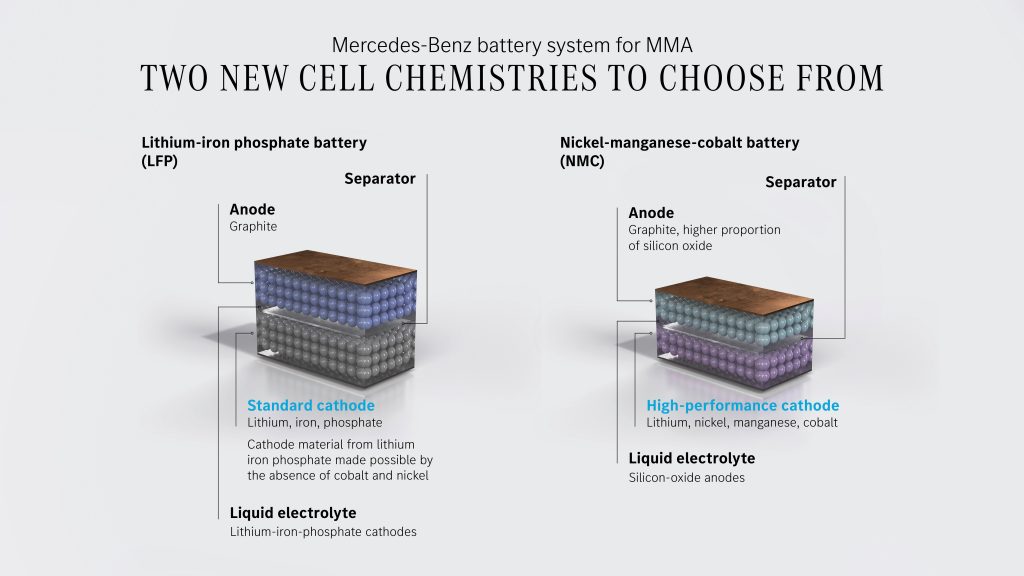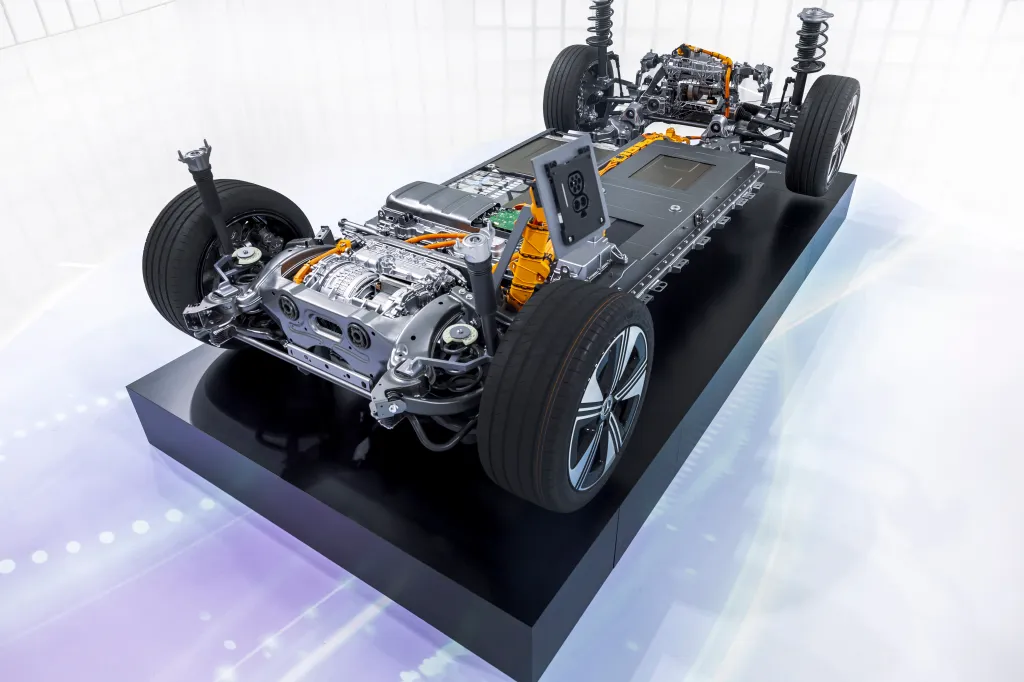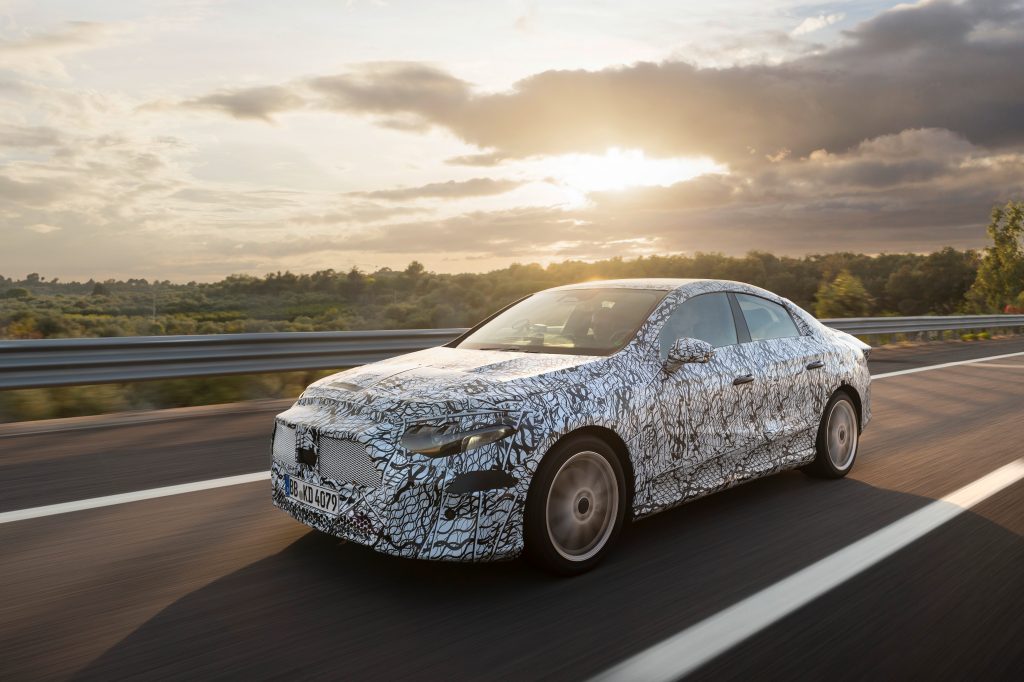
Mercedes released a look at the powertrain technology of its upcoming electric CLA, and it includes tons of neat EV tech and some interesting options for battery technology and what looks to be the most flexible charging system we’ve seen yet.
We’ve already learned a fair amount about the CLA after first seeing the concept last year, and Mercedes released a few new specifics today regarding its powertrain.
In keeping with previous information we knew, the CLA is targeting extremely high efficiency of 12kWh/100km, which translates to just 193Wh/mi or 5.2mi/kWh. That’s more efficient than anything else on the road today – with Lucid’s Air Pure reaching 200Wh/mi, or 5mi/kWh. And just less than what Tesla is claiming the Cybercab will be capable of, at 5.5kWh/mi.

This is thanks to Mercedes’ new compact EDU 2.0 electric motor, which is part of its new Mercedes Modular Architecture (MMA) which will underpin its upcoming electric vehicles. The drive motor will be 200kW on the rear axle, though all-wheel drive models will be available with an additional 80kW unit on the front axle. A two-speed transmission will ensure efficiency at high speeds and low.

For more efficiency in cold weather, the CLA will use an air-to-air heat pump which is able to capture heat from the motor, battery, and ambient air to heat the cabin. While batteries and motors don’t make nearly as much waste heat as inefficient ICE engines, it’s still good to be able to channel heat to wherever you need it.
Mercedes says that the CLA will come equipped with a choice of two different batteries, each with different chemistries.
The larger 85kWh model will be capable of an unnecessarily-high 750km (466mi) of WLTP range – though WLTP numbers are always higher than EPA numbers, so expect something in the high-300s in EPA parlance. This battery will add silicon oxide to the anode for higher energy density, a technology that has been pioneered by Sila Nanotechnologies, a company which Mercedes is a lead investor in.

The smaller battery will be 58kWh, and will use lithium iron phosphate (LFP) chemistry. LFP is a cheaper but lower energy density technology, with higher long-term durability and simpler sourcing of minerals (it uses no cobalt, whereas Mercedes says cobalt has been “reduced” in the larger batteries). However, LFP generally has slower fast charging and cold weather performance.
On charging: the “premium” battery will have an 800V configuration capable of up to 320kW charging speeds. Mercedes says this can add 300km (186mi) of range in 10 minutes, and also says that the car will have a broad charging curve, which means you’ll get high charge rates even if the battery isn’t close to empty. It didn’t specify if the smaller LFP battery will have the same charge rate.
This high charging rate allowed Mercedes to set a record traveling 3,717km (2,309mi) in 24 hours at the Nardo test track in Italy in a pre-production CLA. That’s an average travel rate of 96mph – including time spent charging.
We also learned something about Mercedes’ NACS adoption plans. While just about everyone has committed to transitioning cars to NACS, it has taken longer than expected (largely due to Tesla’s chaotic CEO firing the whole supercharger team for little reason), and few cars have native NACS inlets yet. Some brands can already charge at Superchargers with adapters, but Mercedes is still on Tesla’s “coming soon” page.

As a result of delays in onbaording automakers, some seem to have pulled back on their plans, pushing NACS ports to later model years. But Mercedes has a new and unique solution – it will just put both CCS and NACS ports on the CLA, right on top of each other.
Mercedes says “in the future, new entry-level models will be capable of bidirectional charging,” but isn’t clear whether this model will be capable of that.
Electrek’s Take
While this is short of a full release of specs, we’re excited by what we see here. Mercedes seems to confirm that they’re meeting the efficiency goals they set out, and we like that they’re offering a variety of options and taking advantage of some newer EV tech like 800V charging infrastructure.
The inclusion of both NACS and CCS is very interesting, again offering options to owners during the transition. That seems to be the big message from Mercedes here – we’re not going to just pick one tool, we’re going to use all of them.
But pricing and availability are obviously big questions, as is design.

The concept looks fantastic, but concepts always change on their way into production. The shape of the camouflaged test vehicle is very different – but looks to have some shrouding on the front and back to hide its shape, so we’ll have to wait until we see this thing unveiled for more.
And as for pricing – Mercedes says the CLA will be an “entry-level” car, but who knows what that means anymore these days. The base ICE CLA starts at around $44k currently, so lets see if they can hit that number.
Charge your electric vehicle at home using rooftop solar panels. Find a reliable and competitively priced solar installer near you on EnergySage, for free. They have pre-vetted installers competing for your business, ensuring high-quality solutions and 20-30% savings. It’s free, with no sales calls until you choose an installer. Compare personalized solar quotes online and receive guidance from unbiased Energy Advisers. Get started here. – ad*
FTC: We use income earning auto affiliate links. More.


